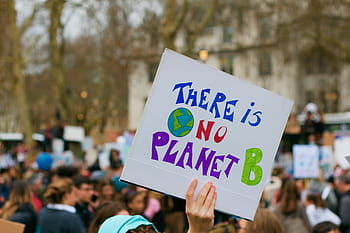Brown: Addressing environmental racism
June 29, 2020
As the Black Lives Matter movement truthfully exposes the systemic racism within our law enforcement institutions, we should not ignore environmental racism and the communities of color that are affected by it.
Institutionalized racism extends well beyond the criminal justice system. While environmental racism is far less visible, the injustice on communities of color is profound.
Environmental racism is the disproportionate impact of environmental hazards on people of color. Several factors cause this disproportion, including intentional neglect of pollution, an alleged need for a receptacle for pollutants in urban areas, a lack of institutional power and low land values of people of color. It is well-documented that communities of color and other low-income communities are disproportionately impacted by polluting industries — specifically hazardous waste facilities — and the lax regulation of said facilities.
Environmental racism occurs right here in our neighborhood communities as well. In Flint, Michigan, massive lead contamination resulted from untreated water in the city’s pipes. Local officials switched water sources to the Flint River and did not immediately treat the water to ensure it didn’t cause corrosion in lead-lined pipes. Thousands of homes in Flint, one of the nation’s poorest cities with a majority of whom are African American, were exposed to lead-contaminated drinking water. A large 99,000 Flint residents were exposed to high levels of lead in their drinking water, which can have severe developmental effects.
Flint is just one example of environmental racism, and the consequences are extreme. In 2019, police killed 235 Black Americans. At the same time, over 13,000 Black people died prematurely due to air pollution alone. Recent studies examined the mortality in the Medicaid population. They discovered those who live in a predominantly Black community suffered greater sickness of premature death from particle pollution than those who live in predominately white communities. Environmental racism may be much less evident than racism in the criminal justice system, but its effects are much more deadly.
Those who suffer from the effects of environmental justice are often the least likely to have the chance to share how these polluting industries have affected their communities. The lack of communication with policymakers means an opportunity to positively impact the environment in these communities is much more difficult. Victims of environmental racism tend to be poor, sick and uninformed about the environmental risks in their community.
Even broader environmental challenges like climate change have racial implications. People of color are more likely to experience the effects of climate change due to the more vulnerable areas in which they live, while also being less able to recover after disaster hits. Similar racial disparities will continue to exist unless we act.
We must recognize racism exists in many aspects of our society. We must stand with the advocates of criminal justice reform, but we must not stop there. If we are committed to the idea that Black Lives Matter, environmental injustice should be at the top of our list.







